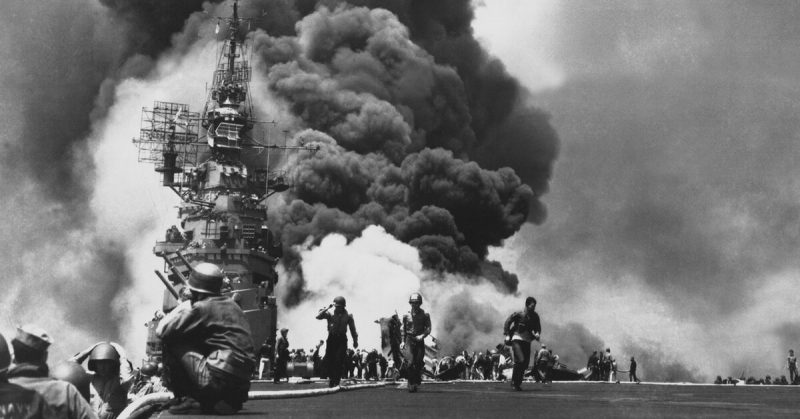The Second World War saw a number of new technological and strategic innovations on both sides. One particularly dark tactical move came towards the end of the war, following America’s decision to join the Allies. The US had at first held back from engaging in combat, although tensions were growing strained. Then, after Japan launched an unprecedented attack on American soil, bombing Pearl Harbour on December 7th, 1941, everything changed.
The US responded to Japan’s open aggression by throwing the full strength of its formidable military against the Axis powers, eventually turning the tide against Hitler and his followers. Japan, however, was the last country to surrender, and before they did they employed a new strategy against their enemies – kamikaze attacks.
These suicide bombers derived their name from the Japanese phrase “Divine Wind”. This refers to a great storm in the 13th Century that destroyed an invading fleet and saved Japan from a Mongolian army. In a chilling echo of these historical events, young men became the new “divine wind”, plunging to certain death in often unsuccessful attempts to destroy American battleships.
However, while many of these suicide attacks missed their targets, those that managed to hit them could be devastatingly effective.
The concept of the kamikaze pilot was first conceived of and put into practice by a man called Masafumi Arima. Before setting off to attack a US aircraft carrier, he informed his comrades that he did not intend to return. While there is still some debate over whether or not he managed to carry out his suicidal mission, he never made it back and was posthumously awarded the rank of Vice Admiral.
This powerful video shows real footage of a terrifying kamikaze attack, as well as providing some further background and context to the deadly strategy itself. The YouTube channel that hosts the video, War Archives, presents classic newsreels from key moments in history, spanning the years from the Boer War in 1899 to the Cold War of the later 20th Century.
